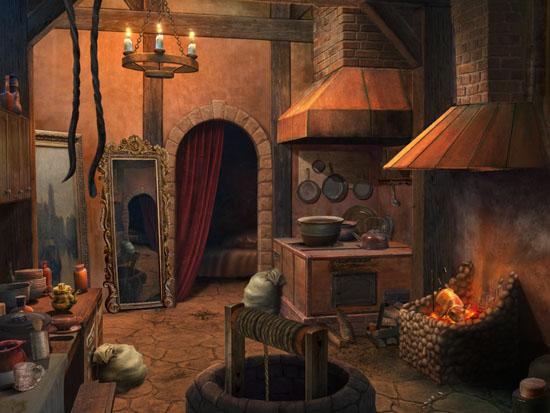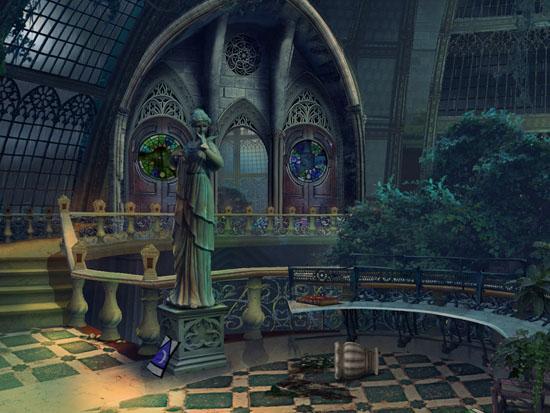- Wondering how to get Monopoly GO! free rolls? Well, you’ve come to the right place. In this guide, we provide you with a bunch of tips and tricks to get some free rolls for the hit new mobile game. We’ll …
Best Roblox Horror Games to Play Right Now – Updated Weekly
By Adele Wilson
Our Best Roblox Horror Games guide features the scariest and most creative experiences to play right now on the platform!The BEST Roblox Games of The Week – Games You Need To Play!
By Sho Roberts
Our feature shares our pick for the Best Roblox Games of the week! With our feature, we guarantee you'll find something new to play!Type Soul Clan Rarity Guide – All Legendary And Common Clans Listed!
By Nathan Ball
Wondering what your odds of rolling a particular Clan are? Wonder no more, with my handy Type Soul Clan Rarity guide.
The Stroke of Midnight Review
Namco’s The Stroke of Midnight is a story-centric adventure that is simply a feast for the eyes. Beautifully rendered 3D environments, cinematic camera angles, and an in-depth and truly enjoyable storyline will keep you coming back for more, if you can even stop playing at all.

You’ll want to play until after the stroke of midnight to keep enjoying this gem.
Namco’s The Stroke of Midnight is a story-centric adventure that is simply a feast for the eyes. Beautifully rendered 3D environments, cinematic camera angles, and an in-depth and truly enjoyable storyline will keep you coming back for more, if you can even stop playing at all.
The Stroke of Midnight follows a struggling romance novelist who is sent to Romania by her husband to spend a vacation of sorts in an ancient castle. The hope is that she will be able to find inspiration in this historical land, but upon arrival, she discovers far more than old stones and tables in this decrepit castle, as the world comes to life with ghosts and voices, telling of the history of those who used to call the castle home.

The story here is experienced through apparitions that appear in almost every one of the game’s 20+ 3D environments. These aren’t painted, static backgrounds – the camera zooms and pans to items of interest, adding a real sense of not only realism, but a feeling like you are actually controlling the character, rather than simply seeing the world through her eyes.
The ghosts themselves tell of a love triangle, not entirely unlike Romeo and Juliet, gone horribly wrong. A young couple named Eva and Vlad are separated when their two fathers decide that Vlad should be married to Eva’s sister Lydia. On the eve of their wedding, Vlad calls off the wedding – he can’t marry someone he doesn’t love. Scandal and a family feud erupts, ending in death, betrayal, and all-around sorrow for both families (the exact details of which I won’t spoil here). It’s a great treat finding a game that takes the story just as seriously as the rest of the gameplay, which The Stroke of Midnight definitely does.
The gameplay itself is more of an adventure/puzzle title than a hidden object game, although there are hidden object scenes placed in every few environments. The gameplay is linear, removing the “backtracking” aspect that most players abhor, and each hidden object scene (find items on a list) will give you an item that you can use elsewhere to continue on in your exploration of the castle. This isn’t to say that you won’t revisit areas of the castle as you uncover more of the story – just that you’ll usually know exactly where to go with little room for error.

As for puzzles, you’ll find the usual suspects here: jigsaw puzzles, tile rotation or sliding puzzles, and so on, but there are also a few unique instances, like one having you tune a piano to summon ghosts in the empty ballroom, or one that has you rearranging portraits on a wall based on the time period in which they were painted. The variety here, and the appropriate balance between the amount of hidden object scenes and puzzles is appreciated, as it keeps the game from becoming dull.
The hint system in The Stroke of Midnight is fairly user-friendly as well. Mirrors, waterfalls, and any other semi-reflective object in the environment will show off poetic hints or status-updates as you play. As an example, when given a choice between two paths, a mirror in the distance offers the following: “Which way do you choose? Restore a tip that shows you the way to go.” If this isn’t enough to set you into motion, you can click on the poem to see a more in-depth hint. There are a few times when you’re looking for numerous items when the hint system might become unhelpful (there is no hint button outside of hidden object scenes), but this is the only real problem the game has – that being a random influx of challenge, that leaves after you finish that particular task.
Furthermore, during hidden object scenes, you can click on an item on the list to see it highlighted in the scene (this is an unlimited ability that doesn’t require recharging), and you can skip puzzles altogether if you choose.
With so much focus on the story, you’ll likely spend as much time watching the ghostly characters on-screen or reading the in-game journal (which updates when you find letters, or other items of interest) as you will actually interacting with the environment. That said, the average player can spend around 2-3 hours with the game, depending on their reliance on hints. It’s only a shame that the game doesn’t last longer, as all of the production values are so high, and the gameplay so downright fun.
All told, The Stroke of Midnight is a pleasure to experience, and is one of the best games I’ve found in the genre. If the game’s graphics and presentation don’t blow you away, the storyline almost certainly will. You’d be amiss not to treat yourself to playing this one.

The good

The bad
More articles...
Monopoly GO! Free Rolls – Links For Free Dice
By Glen Fox
Wondering how to get Monopoly GO! free rolls? Well, you’ve come to the right place. In this guide, we provide you with a bunch of tips and tricks to get some free rolls for the hit new mobile game. We’ll …Best Roblox Horror Games to Play Right Now – Updated Weekly
By Adele Wilson
Our Best Roblox Horror Games guide features the scariest and most creative experiences to play right now on the platform!The BEST Roblox Games of The Week – Games You Need To Play!
By Sho Roberts
Our feature shares our pick for the Best Roblox Games of the week! With our feature, we guarantee you'll find something new to play!Type Soul Clan Rarity Guide – All Legendary And Common Clans Listed!
By Nathan Ball
Wondering what your odds of rolling a particular Clan are? Wonder no more, with my handy Type Soul Clan Rarity guide.







